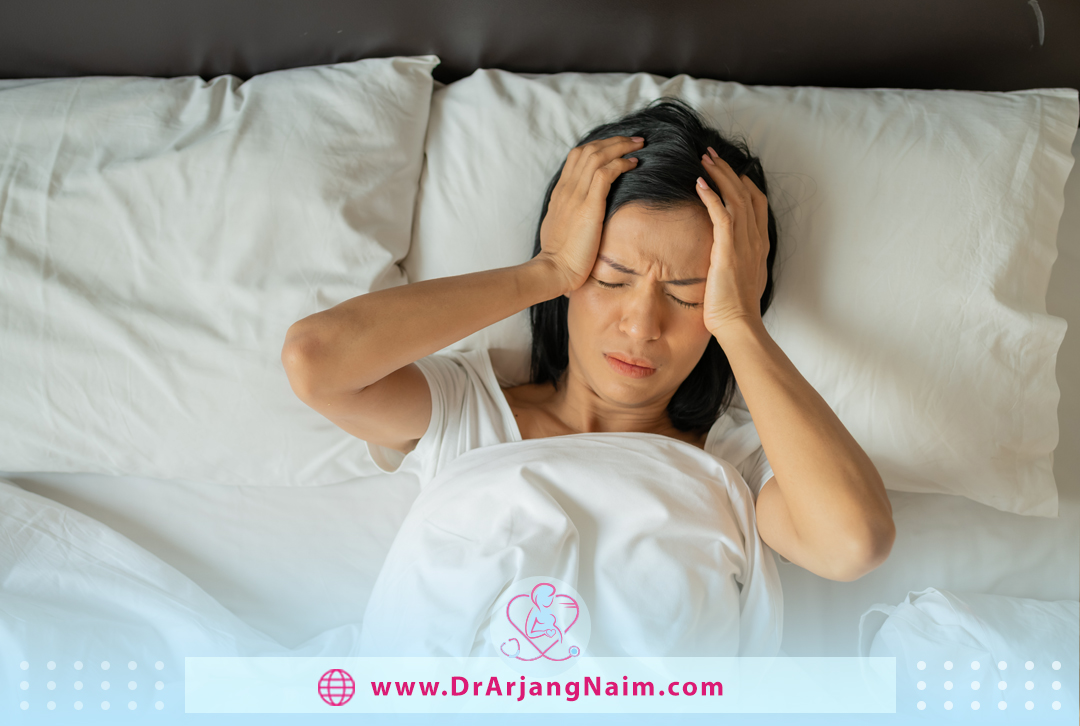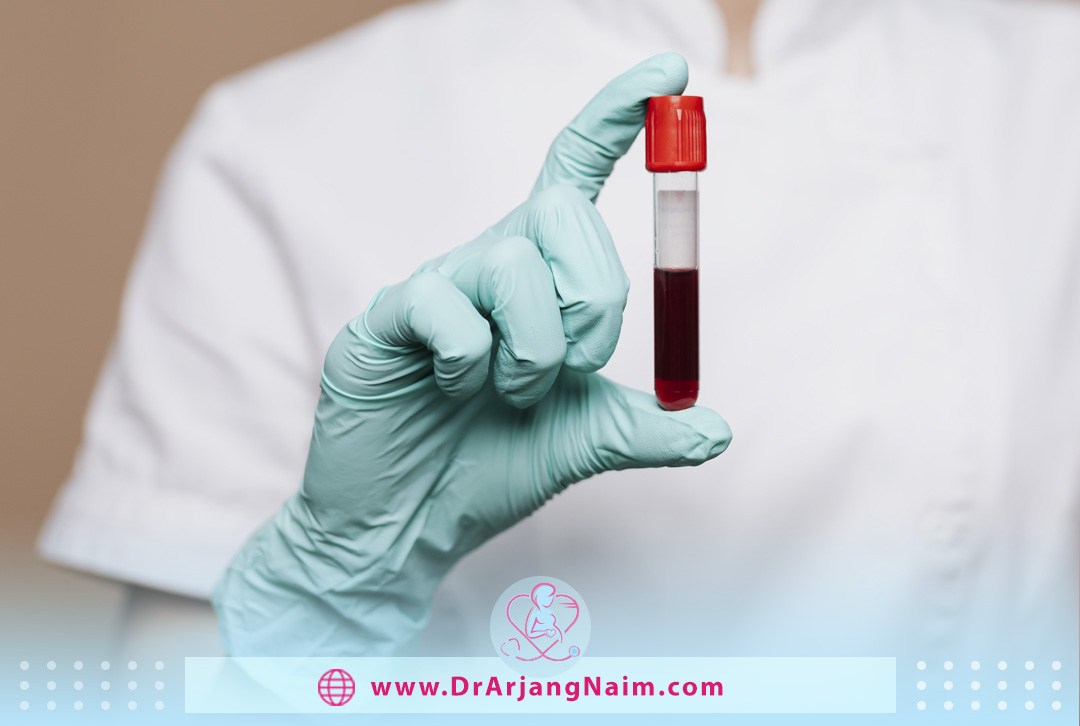Fibromyalgia is a disorder characterized by widespread musculoskeletal pain with fatigue, sleep disturbances, memory impairment, and mood problems. Researchers believe it enhances painful sensations by affecting how the brain and spinal cord process painful and non-painful signals.
Signs and symptoms often begin after an event, such as physical trauma, surgery, infection, or significant psychological stress. In other cases, symptoms accumulate gradually over time without any triggering event. It is not a progressive disease; it does not get steadily worse over time.
Women are more prone to fibromyalgia than men. Many people with fibromyalgia also have tension headaches, anxiety, temporomandibular joint (TMJ) disorders, irritable bowel syndrome, and depression. While there is no cure, various medications can help control symptoms. Exercise, relaxation, and stress-reduction measures may also help.
Signs and symptoms
The primary symptoms include:
· Widespread pain: Widespread pain associated with fibromyalgia is described as a constant dull ache lasting at least three months. For the pain to be widespread, it must occur on both sides of the body and the upper and lower back.
- Fatigue: These people often wake up tired, even if they report sleeping for a long time. Sleep is disrupt by pain, and many patients with fibromyalgia have other sleep disorders, such as restless legs syndrome and sleep apnea.
- Cognitive difficulties: Commonly referred to as “fibro fog,” the symptom impairs the ability to focus, pay attention, and focus on mental tasks.
This disease is often accompanied by other conditions such as:
- Temporomandibular joint disorders
- Anxiety
- Depression
- Postural tachycardia syndrome
- Irritable bowel syndrome
- Chronic fatigue syndrome
- Migraine and other types of headaches
- Interstitial cystitis or painful bladder syndrome
Causes
Anyone can get fibromyalgia, including children. Women are twice as likely to develop as men. It often appear in middle age. Up to 20% of patients who suffer from other chronic disorders such as rheumatoid arthritis, lupus and sarcoidosis can also get this disease.
Repeated nerve stimulation changes the brain and spinal cord of people with fibromyalgia. This change involves abnormally increased levels of certain chemicals in the brain that signal pain. Additionally, the brain’s nociceptors develop a painful memory and become sensitized, meaning they can overreact to painful and non-painful signals. Factors that can lead to these changes include:
- Genetics: This disease usually runs in families; it may cause certain genetic mutations that make a person susceptible to this disorder.
- Infections: Some diseases may cause or worsen fibromyalgia.
- Physical or emotional events: The condition can sometimes be triggered by a physical event such as a car accident. Long-term mental stress may also cause this disease.

Tender points
Health care professionals check to see how many of these spots are painful by pressing firmly on them. Common tender points or trigger points include the following:
- Back of the head
- Tops of the shoulders
- Upper chest
- Outer elbows
- Hips
- Knees
In most cases, tender points are no longer part of the diagnostic process.
Fibromyalgia pain
Pain is a characteristic of this disorder that is felt in various muscles and other soft tissues around the body. It can range from a mild ache to a severe and almost unbearable discomfort.
Chest pain
When pain is felt in the chest, it can feel like the pain of a heart attack. The chest pain in fibromyalgia is in the cartilage that connects the ribs to the breastbone. Chest pain may feel:
- Sharp
- Stabbing
- Like a burning sensation
Back pain
The back is one of the most common places where the pain is felt. Most people experience back pain at some point in their lives. If a person has back pain, it is difficult to diagnose the root cause. Other symptoms such as fatigue and brain fog can point to fibromyalgia as the cause.
Medications that relieve other symptoms can also help with back pain. Stretching and strengthening exercises can also help support the back muscles and other soft tissues.
Leg pain
leg pain may be felt in the muscles and soft tissues of the legs, which can be similar to arthritis stiffness or muscle aches. The pain can be described as deep, burning, or throbbing.
Sometimes this disease feels like numbness or tingling in the legs. An uncontrollable urge to move the legs is a sign of restless leg syndrome, which can overlap with fibromyalgia. Fatigue also appears in the legs. Limbs can feel heavy as if the weight is holding them down.
Risk factors
The exact cause has not yet been identified. Factors that may increase the risk of developing it include:
- Sex: Most cases are now diagnosed in women, but the reason for this difference is unclear.
- Age: This disease is diagnosed in middle age, and the risk increases with age.
- Family history: If close family members are affected, the possibility of infection in other family members is more.
- A history of other conditions: Although this disease is not a type of arthritis, having rheumatoid arthritis (RA) may increase the risk of developing it. It also affects about 30% of people with lupus.

What triggers a fibromyalgia attack?
Certain things can trigger symptoms, especially things that increase stress levels. These include:
- Lack of sleep
- Changes in daily routines
- Hormone fluctuations
- Dietary changes or a poor diet
- Treatment changes
- Stressors such as work-related, illness, emotional stress
- Change in sleep patterns
- Weather or temperature changes
Complications
Fatigue, pain, and poor sleep quality associated with fibromyalgia can interfere with functioning at home or work. The frustration of dealing with an often-misunderstood condition can also lead to depression and health-related anxiety.
The body mistakenly targets its tissues in autoimmune diseases such as Rheumatoid arthritis and lupus. The immune system uses proteins called autoantibodies to attack joints or other healthy tissues, just as it would normally attack viruses or bacteria. It is normal to have a small number of autoantibodies, but high levels may indicate an autoimmune disease.
Autoimmune diseases and fibromyalgia have some overlapping symptoms, such as fatigue and difficulty concentrating. It can be difficult to tell whether symptoms are related to fibromyalgia or an autoimmune disease. It is possible to have both conditions together. The overlap in symptoms has led to the theory that it can also be an autoimmune disease. This claim has been hard to prove because there is little evidence that autoantibodies play a role in fibromyalgia.
Fibromyalgia in females
According to the Centers for Disease Control and Prevention (CDC), fibromyalgia is twice as common in women as in men. Signs are generally more severe in women than in men. In addition, the transition to menopause can worsen symptoms, and some signs of menopause and fibromyalgia look almost identical.
Fibromyalgia in males
Men can have fibromyalgia but may go undiagnosed because it is considered a predominantly female disease. Affected men may have severe pain and emotional symptoms. According to a 2018 survey, the condition may affect their quality of life, career, and relationships.
Fibromyalgia in Children
It’s usually easy to figure out what makes kids sick. Common childhood illnesses such as strep throat and ear infections are easily diagnosed with a throat swab or doctor’s examination. When children complain of vague symptoms such as fatigue, pain, and trouble sleeping, they may be experiencing any of a number of common illnesses. One of the most easily overlooked conditions in children and adolescents is fibromyalgia, which causes pain in the muscles and soft tissues around the joints.
It isn’t easy to diagnose in children because it is much more common in adults. Fibromyalgia often affects women over the age of 18. However, between 1% and 7% of children are thought to have fibromyalgia or a similar condition.
Diagnosis
In the past, doctors would measure 18 specific points on a person’s body to see how much they hurt when they applied firm pressure. Newer guidelines no longer require testing of sensitive areas of the body. Instead, a diagnosis of fibromyalgia is made if a person has had widespread pain for more than three months without any underlying medical condition causing the pain. To meet the criteria, the person must have pain in at least four of these five areas:
- Left lower region, including hip, buttock, or leg
- Right lower region, including hip, buttock, or leg
- Axial region, which includes the neck, back, chest, or abdomen
- Left upper region, including arm ,shoulder, or jaw
- Right upper region, including shoulder, arm, or jaw

Tests
In this situation, the doctor usually rejects other possibilities by using tests. Blood tests may include:
- Thyroid function tests
- Anti-nuclear antibody
- Celiac serology
- Complete blood count
- Erythrocyte sedimentation rate
- Cyclic citrullinated peptide test
- Rheumatoid factor
- Vitamin D
Treatment
There is currently no known cure. Instead, treatment focuses on reducing symptoms and improving quality of life with medications, self-care strategies, and lifestyle changes.

Medication
Medicines can relieve pain and help sleep better. Common medications include pain relievers, anticonvulsants, and antidepressants.
Pain relievers
Pin can be uncomfortable and persistent enough to interfere with daily routines. If the pain is mild, one option is to take over-the-counter pain relievers, such as:
- Acetaminophen (Tylenol)
- Aspirin
- Ibuprofen (Advil, Motrin)
- Naproxen (Aleve, Naprosyn)
These drugs can reduce pain levels and help people manage their condition better. Many of them also reduce inflammation.
Antiseizure drugs
Pregabalin (Lyrica) was the first drug approved by Food and Drug Administration (FDA) for fibromyalgia. It blocks nerve cells from sending pain signals. Gabapentin (Neurontin) is designed to treat epilepsy but may also help reduce symptoms.
Antidepressants
Antidepressants are sometimes used to treat pain and fatigue from fibromyalgia. These drugs may also work to rebalance neurotransmitters and help improve sleep.
Alternative and home remedies
Alternative and home remedies may help people manage symptoms along with medication programs.
Exercise
A combination of aerobic exercise and resistance training may reduce pain, tenderness, stiffness, and sleep disturbance in some people. If exercise helps reduce symptoms, maintaining consistency is essential to see progress.
Acupuncture
Acupuncture may help improve the quality of life in affected individuals. The number of sessions a person may need depends on the symptoms and severity. Complementary therapies, such as acupuncture and massage, may help reduce pain symptoms.
Psychotherapy
Psychotherapy sessions can help sufferers cope with pain . Behavior modification therapy is a type of CBT that aims to reduce behaviors that increase stress or pain and improve positive behaviors. This includes learning new coping skills and relaxation exercises. Some people may find that meditation can help reduce stress and pain.
Diet
A person’s diet is an important part of any treatment plan. Some dietary changes can help the sufferer manage symptoms. This includes:
- Eating high-energy foods low in sugar: Foods such as almonds, beans, oatmeal, avocado, and tofu can help increase energy throughout the day.
- Removing foods that have gluten: Eliminating gluten-containing foods from the diet may help reduce pain, even in people who do not have celiac disease.
- Avoiding fermentable oligosaccharides, disaccharides, monosaccharides, and polyols (FODMAP): A low FODMAP diet can have promising effects on pain levels in sufferers.
- Avoiding additives and excitotoxins: Avoiding the additives aspartame and monosodium glutamate reduces symptoms.
- Achieving or maintaining average body weight and following a balanced diet is critical to overall health and can improve a person’s quality of life.
Link Between Fibromyalgia and Gynecologic Disease
People have seen the onset or changes in their symptoms in relation to women’s conditions for many years. For example, it is not uncommon for symptoms to appear shortly after perimenopause . Likewise, some people have improved their symptoms after taking procedures that alter female hormone production.
Women with this disease are especially prone to painful periods (dysmenorrhea) and some pregnancy complications. There is also evidence that flares occur more often during the premenstrual period. Signs in women may vary with the reproductive cycle, including pregnancy and menopause, with early menopause and increased pain sensitivity in people with fibromyalgia possibly related to declining estrogen levels.
The bottom line
Fibromyalgia is associated with widespread pain in the skeletal muscles and with-it symptoms such as fatigue, sleep disorders, memory disorders, and mood changes. Researchers believe that fibromyalgia spreads the feeling of pain in the body and affects how the brain processes pain signals.
Currently, there is no cure for this disease, and a person may experience its symptoms for the rest of their lives. However, treatment programs combining medication with physical and psychological therapies can help them manage long-term.
Additional questions
1. What happens if fibromyalgia is left untreated?
The main danger of going untreated is that symptoms such as chronic pain, fatigue, headaches, and depression can worsen over time.
2. What is the best weather for fibromyalgia?
Most sufferers report feeling better during periods of mildly warm weather. Spring seems to be the best season of the year due to relatively mild conditions in most places.
- What kind of doctor is best for fibromyalgia?
Rheumatologists are internists who specialize in treating arthritis and joints, muscles, and soft tissue diseases.
4. Does fibromyalgia cause weight gain?
It can lead to weight gain and inactivity, and being overweight can lead to more severe symptoms.
- Does massage help fibromyalgia?
One of the best treatments for sufferers is massage therapy. Massage helps people reduce leg pain, reduce stress hormones, and increase serotonin levels.
References:
https://www.mayoclinic.org/tests-procedures/mammogram/about/pac-20384806
https://www.radiologyinfo.org/en/info/mammo
https://www.ssmhealth.com/womens-health/breast-health/mammogram-types
https://www.mayoclinic.org/tests-procedures/mammogram/in-depth/dense-breast-tissue/art-20123968




